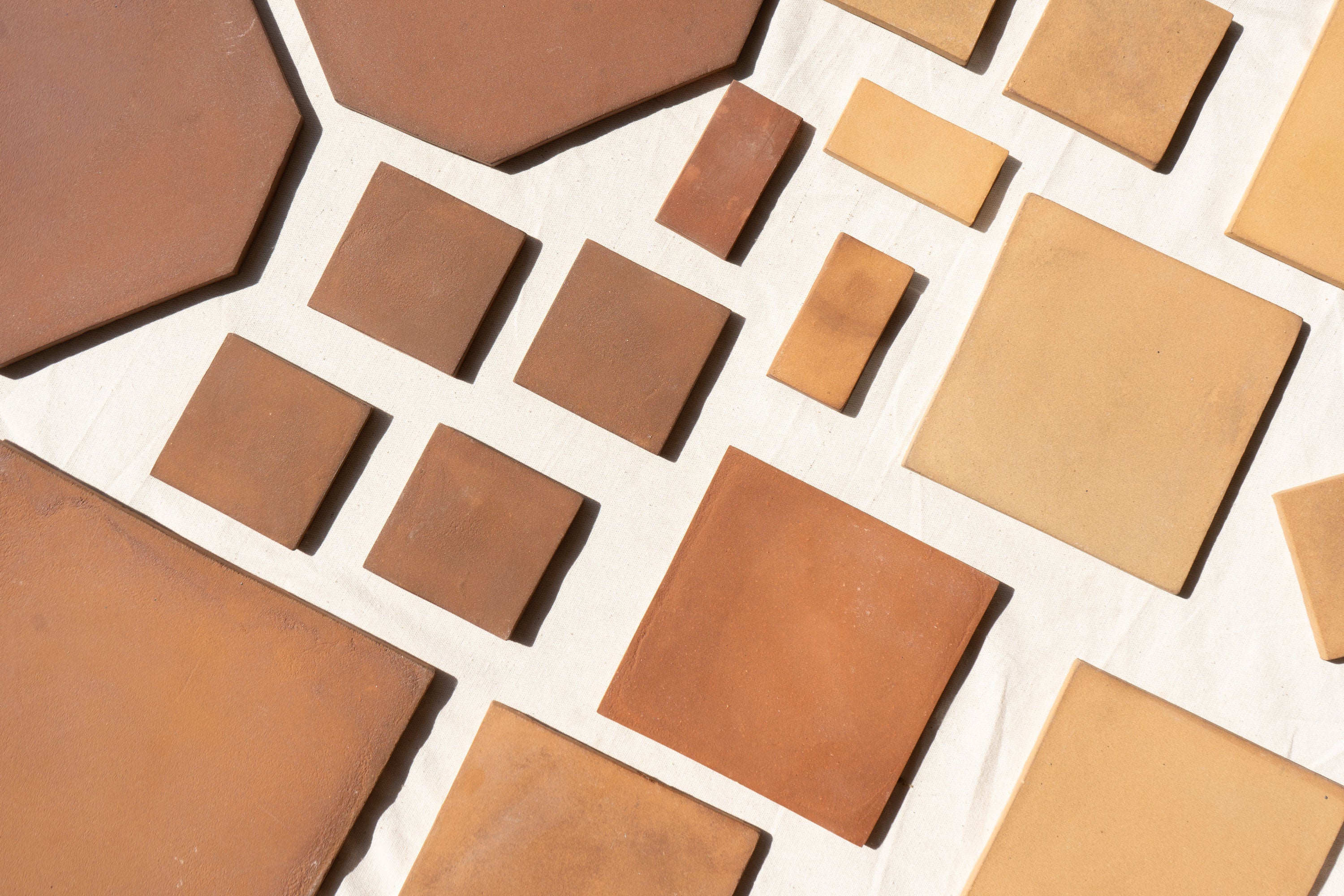Are you considering terracotta tiles for your home or project? Cotto and Saltillo are two of the most popular choices, each with unique characteristics. In this guide, we’ll explore the key differences between Cotto and Saltillo tiles, helping you make the best choice for your space.
- What Is Terracotta Tile?
- Color Variations
- Size Options
- Tile Thickness
- Density & Durability
- Sealing Requirements
- Slip Resistance
- Pricing Comparison

What Is Terracotta Tile?
Terracotta, which translates to "baked earth," is a clay-based, fired earthenware or ceramic material. Unless specified otherwise, terracotta is typically unglazed and porous. It is commonly used for tableware, pottery, roofing, building materials, and, of course, tiles.

Both Cotto and Saltillo are handmade terracotta tiles, meaning they exhibit natural variations in color, texture, and sheen. These variations are inherent to the natural materials used and are not considered defects. We highly recommend ordering samples before making a final purchase to appreciate these unique characteristics.
Color Variations
- Saltillo Tiles: Naturally occurring color variations ranging from warm golds to deep reds.
- Cotto Tiles: Available in three distinct color options—red, amber, and brown. Each shade may have slight variations from darker to lighter tones.
 Cotto tiles are available in three color options: Sienna, Umber, and Tierra.
Cotto tiles are available in three color options: Sienna, Umber, and Tierra.

Traditional Saltillo tile has a wide range of colors.
Sealing also impacts color:
- Gloss and satin-sealed terracotta tiles develop deeper hues, with richer red and gold tones due to the sealer enhancing the natural clay color.
- Matte-sealed terracotta tiles retain a softer, more natural look, ranging from peach to pale yellow, similar to unsealed terracotta but with protection against water absorption.
Size Options
Both Cotto and Saltillo tiles are available in various shapes and sizes, including standard squares and intricate interlocking patterns.
- Saltillo Tile Sizes: Expect more variation, sometimes up to ¼-inch differences from tile to tile.
- Cotto Tile Sizes: More uniform in size, allowing for tighter grout joints.
Because of these size differences, Saltillo tiles require larger grout joints, which complement design styles like "hacienda" or "old-world" aesthetics.

Keep size variation in mind for smooth installation.
Tile Thickness
- Saltillo Tiles: Approximately ¾ inch thick.
- Cotto Tiles: Slightly thinner at ½ inch thick.
Density & Durability
- Saltillo tiles are fired at lower temperatures, making them more porous and softer. As a result, they have a slightly “pillow-topped” texture and require proper sealing to prevent staining.
- Cotto tiles are denser and less porous, making them more durable but also prone to trapping dirt, which increases maintenance needs.

Saltillo tiles are hand pressed into wooden molds using the weight of the tile maker, making Saltillo tiles less dense.

Cotto tiles are denser because of the use of machinery and can be fired at a higher temperature.
Sealing Requirements
Sealing is critical for Saltillo tiles and should be maintained over time:
- Saltillo tiles must always be sealed to prevent staining. However, sealer is not the same as glaze—it dries on the surface rather than being fired.
- Cotto tiles, due to their density, require only a penetrating sealer (e.g., 511 Impregnator or 511 Porous Plus). Using thick sealers can lead to flaking.
Before sealing your tiles, always test a small area to ensure compatibility.
Slip Resistance
If you’re installing terracotta tiles on a floor, consider slip resistance:
- Saltillo tiles have a smoother surface and, when sealed, can be more slippery.
- Cotto tiles have a rougher texture and offer better slip resistance, making them suitable for both indoor and outdoor applications.

Terracotta tiles can vary in color within the same tile.
Pricing Comparison
- Cotto tiles are generally more expensive due to their refined production process and higher firing temperatures.
- Saltillo tiles are a more budget-friendly option, starting at a lower price per square foot.

Cotto, a much denser product, however, they require sealing.

Final Thoughts
We hope this guide helps you understand the differences between Cotto vs. Saltillo tiles. If you have any questions, feel free to email us at contact@clayimports.com.
Important Disclaimer
Since tile installation plays a significant role in the final result, Clay Imports does not provide warranties on this product and is not responsible for dissatisfaction after installation. Please inspect all tiles upon receipt and consult a professional tile installer before proceeding with your project.





 Share
Share
 Pin it
Pin it














